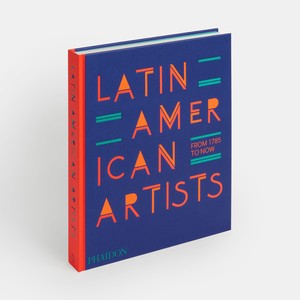
Latin American Artists: From 1785 to Now
To celebrate the publication of Phaidon’s new, expansive survey, we share an excerpt from Raphael Fonseca’s introduction and a few of the more than three hundred artists featured.
September 27, 2016
One of Brazil’s most renowned living artists, Adriana Varejão is perhaps best known for her Azulejão or “big tile” paintings. These highly inventive works, in plaster and oil paint on canvas, refer to azulejos, the distinctive blue-and-white painted terracotta tiles whose complex provenance connects Brazil with Portugal through colonization and trade. Gagosian director Louise Neri discusses the evolution of the series with Adriana Varejão.
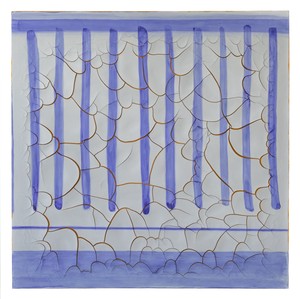
Adriana Varejão, Azulejão (Doric), 2016, oil on plaster on canvas, 70 ⅞ × 70 ⅞ inches (180 × 180 cm)
Adriana Varejão, Azulejão (Doric), 2016, oil on plaster on canvas, 70 ⅞ × 70 ⅞ inches (180 × 180 cm)
LOUISE NERIYour Azulejão or “big tile” paintings are unique in the history of contemporary art. How did they evolve?
ADRIANA VAREJÃOFor many years, I have been deeply fascinated by the traditional blue and white tiles that decorate religious and secular historical buildings all over Portugal and Brazil. I wanted to reflect on this in my work as an artist. The tiles themselves prompted me to think about how to give my paintings an extreme physicality. I began by using thick layers of oil paint, then adding mass to the surface to simulate the quality of a ceramic tile.
LNAre there other inspirations beyond the azulejos?
AVIn studying Chinese Song pottery of the eleventh century, I became fascinated by its characteristic surface cracks and the related philosophy. It is in these cracks that Chinese writing actually originates. It was oracular; at first people tried to codify the cracks in turtle shells. This is how the first Chinese pictograms came about. An entire aesthetic evolved from reading meaning into cracks, slowly becoming its own culture.
Inspired by this, I began by using thick layers of oil paint, then I started adding mass to simulate the quality of a cracked tile, working with slow-drying plaster and experimenting over time to achieve a cracked surface.
LNIn your paintings, the cracks in a tile become something very physical, almost geological.
AVYes, I developed this elaborate process of construction to provoke incidents, mapping the passage of time.
LNHow long does it take for the surface to dry?
AVUp to one month. And I never know exactly how the surface will crack. It is fascinating, like the hand of an invisible artist at work—the same hand that makes the lines in your hand, the roots of the trees, lightning in the sky.
LNAnd then what?
AVWhen I achieve a very good cracked surface, I need to find the right image to use with it. It is in the empty spaces between these cracks where I can work with images or figures.
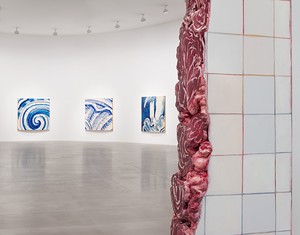
Installation view, Adriana Varejão: Azulejão, Gagosian, Rome, October 1, 2016–January 14, 2017
LNSo it’s a bit like film montage?
AVIt’s a natural order (process) in dialogue with a cultural or an artificial order (images). Two different “bodies” occupying the same space—the internal surfaces in ochre with the blue-and-white painted surface; or, in the case of my sculptures, the gridded surface that simulates tiles with the inner “flesh.”
LNAnd so once you have the ground of the painting prepared, what is the next step?
AVI have to choose the image. In my constant and ongoing research in Portugal and Brazil on azulejos, working with the same photographer over many years, Vicente de Mello, I visit churches and architectural sites, or consult repertories of tile fragments. Over fifteen years, I have amassed a vast archive of tile images. In the case of this exhibition, I chose each image for its abstract qualities. It is important to remember that, originally, each tile is a small fragment of a much larger representational scene.
LNAre the visual references of tile details that you worked from for the Rome paintings all from the same historical period and place?
AVThey range from the seventeenth century to the nineteenth century, and all of them are Portuguese.
LNPreviously, you made an analogy to music in saying that you can never interpret a single visual reference the same way twice. What did you mean by that?
AVI was speaking specifically about João Gilberto, one of Brazil’s greatest musicians and composers who almost never made any original songs; instead he recomposed existing songs in his own way, in a sort of lapidary process. In this case, the act of interpretation is also an act of composing.
From Gilberto’s example, I asked myself why should I invent new images when there are so many in the world? I don’t have to create more. My strategy is to select existing images and recreate them. And I prefer this as a way of engaging history, of finding images and picking up fragments.
LNSo there is a constant editing process at work. . .
AVYes, it’s all about the fragment.
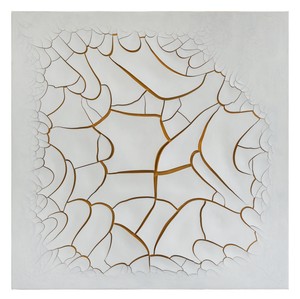
Adriana Varejão, Monocromo Roma II, 2016, oil on plaster on canvas, 70 ⅞ × 70 ⅞ inches (180 × 180 cm)
LNMost ancient Greek philosophy survives only in fragments, as phrases or sentences. An entire philosophical universe can be generated from a single phrase.
AVThe fragment is an open structure. With the works for the Rome exhibition, the images are vital precisely because they are not complete; movement continues. In the beginning, I used to choose the fragment to build a different structure. In Celacanto Provoca Maremoto, a huge immersive installation comprising 184 paintings, I deconstructed and dislocated images in order to construct again, within the formal structure of the grid, to give rhythm to the composition.
LNThe latest Azulejão paintings are 180 centimeters squared, the largest single tile paintings that you have ever made.
AVYes, I always have to create a relation between body and space. It is clear that the viewer has to construct much more for him or herself in the empty space that surrounds these paintings.
LNWhat does this increase in scale mean for you?
AVAs in the original source—the small tile—my brushstroke has to appear spontaneous, as if I were painting quickly, with very few brushstrokes.
LNCan’t you just use bigger brushes?
AVI have tried, but it doesn’t achieve the necessary effect. Even when I appear to be working freely and gesturally, I am not. The apparent spontaneity is simulated. So my whole process and its effects are totally controlled and totally artificial.
Artwork © Adriana Varejão; Adriana Varejão: Azulejão, Gagosian Rome, October 1, 2016–January 14, 2017

Louise Neri has been a director at Gagosian since 2006, working with artists and developing exhibitions, editorial projects, and communications across the global platform. A former editor of Parkett magazine, she has authored and edited many books and articles on contemporary art. Beyond the exhibitions she has organized for Gagosian, she cocurated the 1997 Whitney Biennial and the 1998 São Paulo Bienal, among numerous international projects. Photo: Lin Lougheed

To celebrate the publication of Phaidon’s new, expansive survey, we share an excerpt from Raphael Fonseca’s introduction and a few of the more than three hundred artists featured.
To coincide with the release of the first English-language monograph on the career of Adriana Varejão—in which her diverse body of work is explored in depth, from her earliest paintings in the 1990s to her most recent multimedia installations—the artist has curated a selection of films as part of a series copresented by Gagosian and Metrograph in the theater and online. The program features cinema exploring themes of eroticism, excess, and science-fiction fatalism.
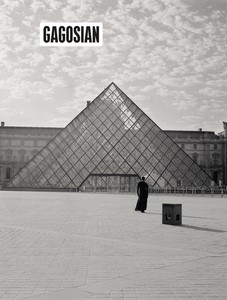
The Summer 2021 issue of Gagosian Quarterly is now available, featuring Carrie Mae Weems’s The Louvre (2006) on its cover.
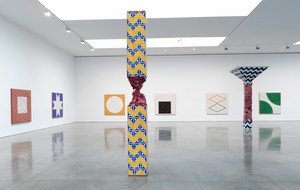
Curator Luisa Duarte considers the artist’s oeuvre, writing on Varejão’s active engagement with theories of difference, as well as the cultural specters of the past.
Join Adriana Varejão at her studio in Rio de Janeiro as she prepares for her upcoming exhibition at Gagosian in New York. She speaks about the inspirations for her “tile” paintings, from Portuguese azulejos to the Brazilian Baroque to the Talavera ceramic tradition of Mexico, and reveals for the first time her unique process for creating these works.
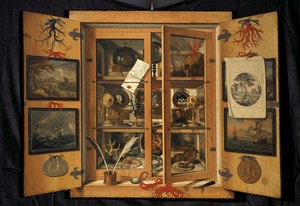
Sydney Stutterheim meditates on the power and possibilities of small-format artworks throughout time.
From October 19 to 21, 2017, Adriana Varejão’s video installation Transbarroco (2014) played across the façade and in the central courtyard of the historic John Sowden House, designed by Lloyd Wright in 1926.

Lilia Moritz Schwarcz explores themes that are central to the artist’s oeuvre.
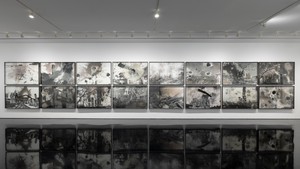
Sébastien Delot is director of conservation and collections at the Musée national Picasso–Paris and the organizer of the first retrospective to focus on Anselm Kiefer’s use of photography, which was held at Lille Métropole Musée d’art moderne, d’art contemporain et d’art brut (Musée LaM) in Villeneuve-d’Ascq, France. He recently sat down with Gagosian director of photography Joshua Chuang to discuss the exhibition Anselm Kiefer: Punctum at Gagosian, New York. Their conversation touched on Kiefer’s exploration of photography’s materials, processes, and expressive potentials, and on the alchemy of his art.
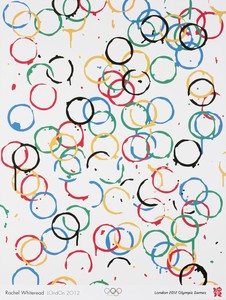
The Olympic and Paralympic Games arrive in Paris on July 26. Ahead of this momentous occasion, Yasmin Meichtry, associate director at the Olympic Foundation for Culture and Heritage, Lausanne, Switzerland, meets with Gagosian senior director Serena Cattaneo Adorno to discuss the Olympic Games’ long engagement with artists and culture, including the Olympic Museum, commissions, and the collaborative two-part exhibition, The Art of the Olympics, being staged this summer at Gagosian, Paris.

On the occasion of Art Basel 2024, creative agency Villa Nomad joins forces with Ghetto Gastro, the Bronx-born culinary collective by Jon Gray, Pierre Serrao, and Lester Walker, to stage the interdisciplinary pop-up BRONX BODEGA Basel. The initiative brings together food, art, design, and a series of live events at the Novartis Campus, Basel, during the course of the fair. Here, Jon Gray from Ghetto Gastro and Sarah Quan from Villa Nomad tell the Quarterly’s Wyatt Allgeier about the project.
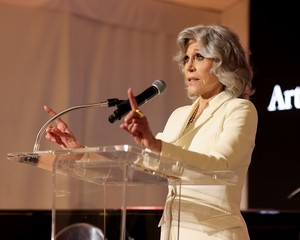
Art for a Safe and Healthy California is a benefit exhibition and auction jointly presented by Jane Fonda, Gagosian, and Christie’s to support the Campaign for a Safe and Healthy California. Here, Fonda speaks with Gagosian Quarterly’s Gillian Jakab about bridging culture and activism, the stakes and goals of the campaign, and the artworks featured in the exhibition.